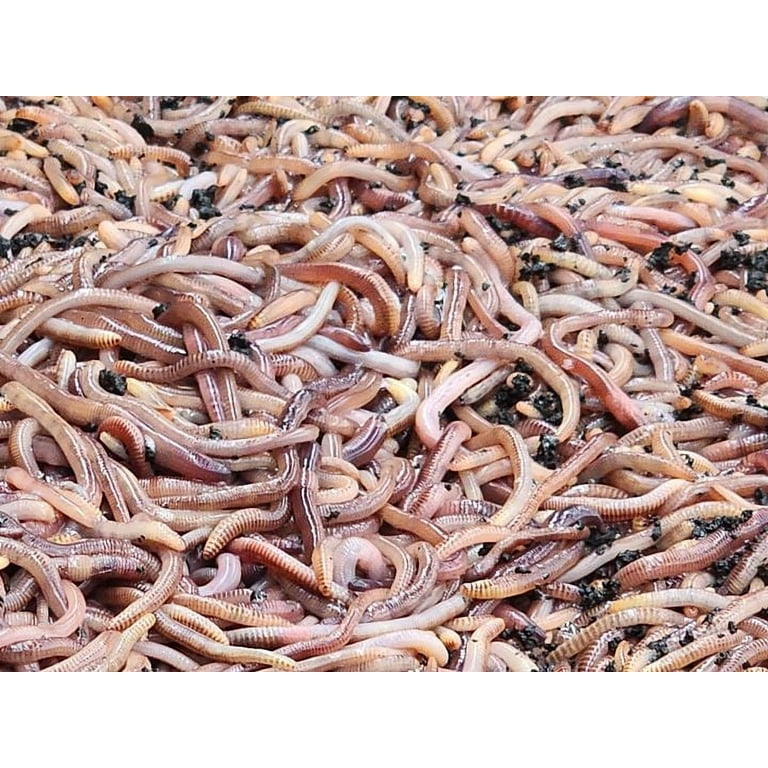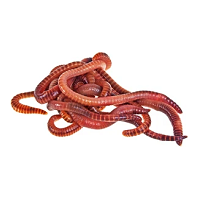The Greatest Guide To Where To Find Red Wigglers
The Greatest Guide To Where To Find Red Wigglers
Blog Article
Some Of Where To Find Red Wigglers
Table of ContentsFascination About Where To Find Red WigglersThe 9-Second Trick For Where To Find Red Wigglers4 Simple Techniques For Where To Find Red WigglersThe Buzz on Where To Find Red WigglersThe Ultimate Guide To Where To Find Red WigglersThe Facts About Where To Find Red Wigglers Uncovered
For best outcomes, you wish to aim for about 60-70% moisture level. The simplest examination for this is to press a handful as difficult as you can. At the ideal moisture levels which is simply under 70% that handful must barely yield one drop of fluid. pH in a worm bin is pretty easy to keep.
The Indian Blue is ravenous, however also favors a warmer environment and it likewise shows a tendency to run away the bin. The red wiggler is a sturdy worm and isn't as picky concerning its climate. I like to call it the Ford Taurus of vermicomposting worms; you will not brag to your hardcore composting friends that you own them, however they will offer you well.
As Tap showed, a fishermen can do a good bargain to make a worm more attractive.
Fascination About Where To Find Red Wigglers
I believe you will as well if you try them. The smaller the trout stream, the much better worms job is an axiom that hasn't transformed in the 100-plus years because Perry composed his post. Fishermens of his period merely stuck their rickety fly poles with alder tangles and went down a weighted worm right into a deep opening.
Early morning is prime feeding time, and the lightweight lure's slow-moving descent leaves 5 inches of agonizing protein completely sight for fairly a while. After you've made the actors, maintain the bond open and placed the pole in a forked stick. The line will certainly diminish the pole in slow loops as the worm settles, yet generally the slow-moving loops will become a blur, and the morning will all of a sudden get rather fascinating.
You can fish deep and cover a whole lot of area, and the crawler seems to be the perfect touch for this transitional time, when the smallmouths have yet to lock on to a recommended forage. Dark jigsblack, brownish, and purpleseem to match the nightcrawler's color. I normally utilize a whole 'spider, choose marabou dressing, and drop the pole for 2 or three seconds when I obtain a hit.
And distinguishing bottom from a bite can be challenging. The trick is to reduce the rod back to the strike (possibly a foot) and feel for life at the end of the tightening up line. If it exists, established the hook with a sweep as opposed to a jerk. Every now and then you'll find yourself hooked to those slow, passionate pulls, and feel the weight of a nice walleye.
Where To Find Red Wigglers for Beginners
When the hefty walleyes go on to the big-water shoals in the late summertime, attempt pursuing them with a bucktail jig and a 1-inch pinch of nightcrawler. The lure covers the hook factor, disperses weeds, and offers a taste of victim. With absolutely nothing dangling or flapping, it remains secure no matter of current, casts, or ambitious panfish.
Whether you're wading or fishing from a watercraft, drifting worms is among the wonderful searching approaches for bigger rivers. For trout, a spade-dug, 4-inch garden worm is the best dimension; for bass, walleyes, and steelhead, a nightcrawler might be a better selection. The trick is to wander the bait through feeding and holding areas because fish in present are not mosting likely to chase down the bait, as they might in still water.
Strikes will come as a sharp tug instead of a pull or rap. Fish the changes: mouths of tributaries, bank-side slicks, and the edges of big pools. As the late Ed Zern, Area & Stream's fantastic humorist, once placed it: Fishermens are birthed honest but they overcome it. His motto puts on any kind of variety of angling maneuvers, including the matter of including an item of worm to a damp fly.

All about Where To Find Red Wigglers
Add a few hundred worms and feed them 2 times a week. Keep the bedding moist yet not damp. On the menu: lettuce, fruit and vegetable waste, and the occasional nongreasy surplus.
Simply like veggie scraps, you can take your made use of coffee grounds and include them to a worm box. Worms love consuming coffee grounds.
When the hefty walleyes proceed to the big-water shoals in the late summer season, attempt going after them with a weblink bucktail jig and a 1-inch pinch of nightcrawler. The lure covers the hook factor, disperses weeds, and offers a taste of victim. With nothing dangling or waving, it stays safe no matter of present, casts, or ambitious panfish.
9 Simple Techniques For Where To Find Red Wigglers
Whether you're wading or fishing from a boat, drifting worms is one of the terrific browsing methods for larger rivers. Where To Find Red Wigglers. For trout, a spade-dug, 4-inch look at here now yard worm is the appropriate size; for bass, walleyes, and steelhead, a nightcrawler may be a far better option. The key is to wander the lure via feeding and holding areas due to the fact that fish in present are not going to ferret out the lure, as they could in still water
Fish the shifts: mouths of tributaries, bank-side slicks, and the sides of large swimming pools. His dictum applies to any type of number of angling maneuvers, consisting of the matter of adding a piece of worm to a damp fly.
Increasing your own lure implies you can slide out of the house and hit the fish pond before Mother comes homejust like in the old days. Right here's how to keep a worm box: Cut a sheet of CDX-grade plywood, which is made with waterproof glues, to your measurements. Accomplish with each other and drill a dozen 12-inch holes in the base for water drainage.
Where To Find Red Wigglers for Dummies
Fill it with shredded newspaper, leaves, peat moss, and soil. Moisten gently. Cover and let sit for a week. Add a few hundred worms and feed them 2 times a week. Keep the bed linens wet but not wet. On the food selection: lettuce, fruit and helpful resources vegetable waste, and the periodic nongreasy surplus.
Simply like veggie scraps, you can take your used coffee premises and add them to a worm box. Worms enjoy consuming coffee premises.
Report this page